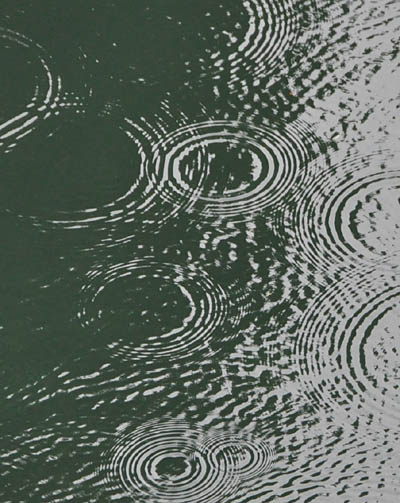
It has been reported that in Japan, the weather jumped autumn cool to winter cold!
Japanese are lucky to enjoy distinctive four seasons, but quick transition of seasons keeps them busy at grabbing a thick jumper out of wardrobe.
It is difficult to keep in good shape in such a climate...
Here in Bangkok, we are between a rainy season and a dry season.
It rains twice or three times a day so~ooo hard with a rumbling of the thunder and flashing lights like an invasion of U.F.O.
At my home in the suburb of Bangkok, we can't hear anything else but frogs croaking before the rain.
When it stops raining, now you can hear a chorus of frogs and crickets at the same time.
It is a real mixture of summer and autumn in a little garden.
One of the famous Japanese novelists, Mr. Yukio Mishima describes the rain in Thailand in his novel, "The Temple of Dawn".
It sounds similar to a shower in Japan, but because of the enormous power of tropical nature, Thais young and old, seem to be very scared of thunder.
Let's have a look at "Rain March" by Fujifabric.
Please find the phrase in the lyrics, "rains softly".
Except the rain in summer, it normally rains softly and gently in most of the cases in Japan.
Japanese language has the greatest variety of words referring rain among all the languages in the world.
Depends on the style of rain, the size of raindrops, the season, rain is called in different names - koburi (sparkling), honburi (rain in earnest), toori-ame (shower), niwaka-ame (shower), kosame (drizzle), naga-ame (long spell of rain), oo-ame (heavy rain), kirisame (misty rain), konuka-ame (literally, "rice bran rain"), doshaburi (pouring rain), shino-tsuku-ame ("a bamboo grass poking rain" , a kind of pouring rain), harusame (spring rain), samidare (early summer rain), baiu (rain in rainy season), akisame (autumn rain), etc.
These terns are not used only in weather news on TV, but also in cultural context such as literature, music.
"Ame furi" (lyrics by Hakusyu Kitahara, music by Shinpei Nakayama) is one of the most well-known nursery rhymes among Japanese people.
Ame furi
The cultural aspect of rain must have been established by the delicated sensitivity of Japanese people, but also from the wet weather throughout four seasons, I believe.
Rice is staple food in Japan, so rainfall on rice field is thanked as the blessing of nature.
Rice plants do not grow without rain water.
When farmers suffer from a shortage of rain water, they organize a special ceremony praying for rain.
The style and procedure of the ceremony vary between each area in Japan, but many folktales, such as "Kappa's pray for rain" (Kappa is a kind of mononoke. see Post on Spooky Jacaranda for more details) can be found throughout Japan.
By the way, Thais do also have a rain ceremony.
A special kind of cat with grey fur called "sii sawaat" is put on a little portable float and farmers pray for rain in a rice field.
The reason why they use this particular kind of cat is the colour of the cat resembles to the colour of a rain cloud.
I have actually seen one before, and it is really beautiful shiny grey.
A rain ceremony might be original and also common among areas where rice cultivation sustains daily life.
Next phrase is "scenery full of umbrellas opening and closing".
Every time I go back home in Japan, I am surprised at the great variety of umbrellas, and a history of umbrellas in Japan is quite outstanding.
In Kofun Era (around 550A.D.), Chinese immigrants brought parasols with them to Japan, but because of a wet weather throughout a year, they were transformed into umbrellas for a purpose of protecting from rain.
A kind of mononoke called Karakasa Obake is one of evidences as Kara means Chinese.
After years, umbrellas in a wester style was modified and was adapted its style to Japanese life.
In London, it often drizzles all year round, but we hardly find people using umbrellas!
One of my British friends told me that an English gentleman loves to carry his own made-to-order umbrella, but they do not open it.
Carrying as a walking stick is the good manner of an English gentleman.
Commoners have adopted this culture into their life or people simply cannot be bothered to carry umbrellas with them as it rains too often, in England people hardly use umbrellas in rather heavy rain...
How about in France and Germany which belong to the similar climate?
Do Canadians, who have been strongly influenced by British, use umbrellas?
Please let me know!
Umbrellas open and close like flowers on the street.
It is a typical scenery on a rainy day in Japan.
I thought of something like this sitting beside the window hearing a rumbling sound of thunder in Thailand.
"Rain March" by Fujifabric








